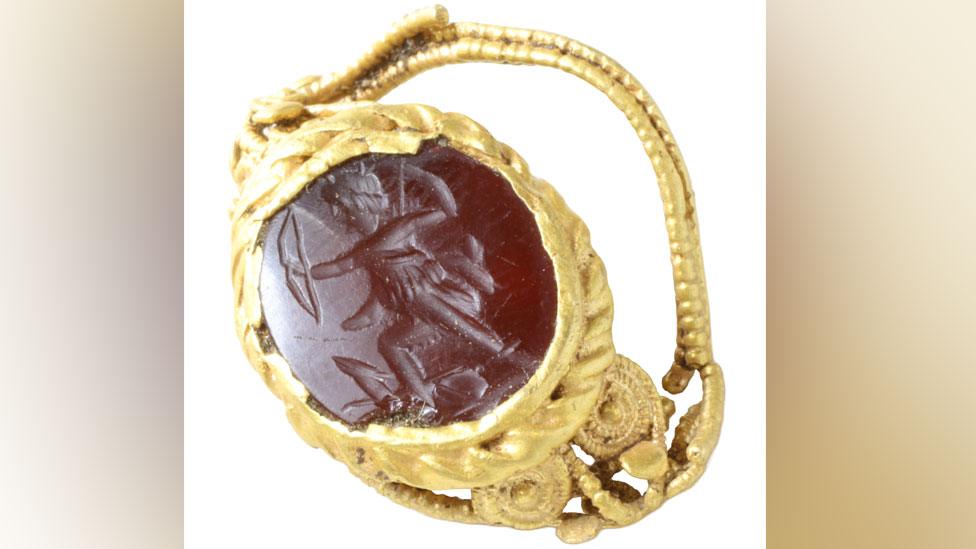Castle acquires largest Anglo-Saxon gold coin hoard
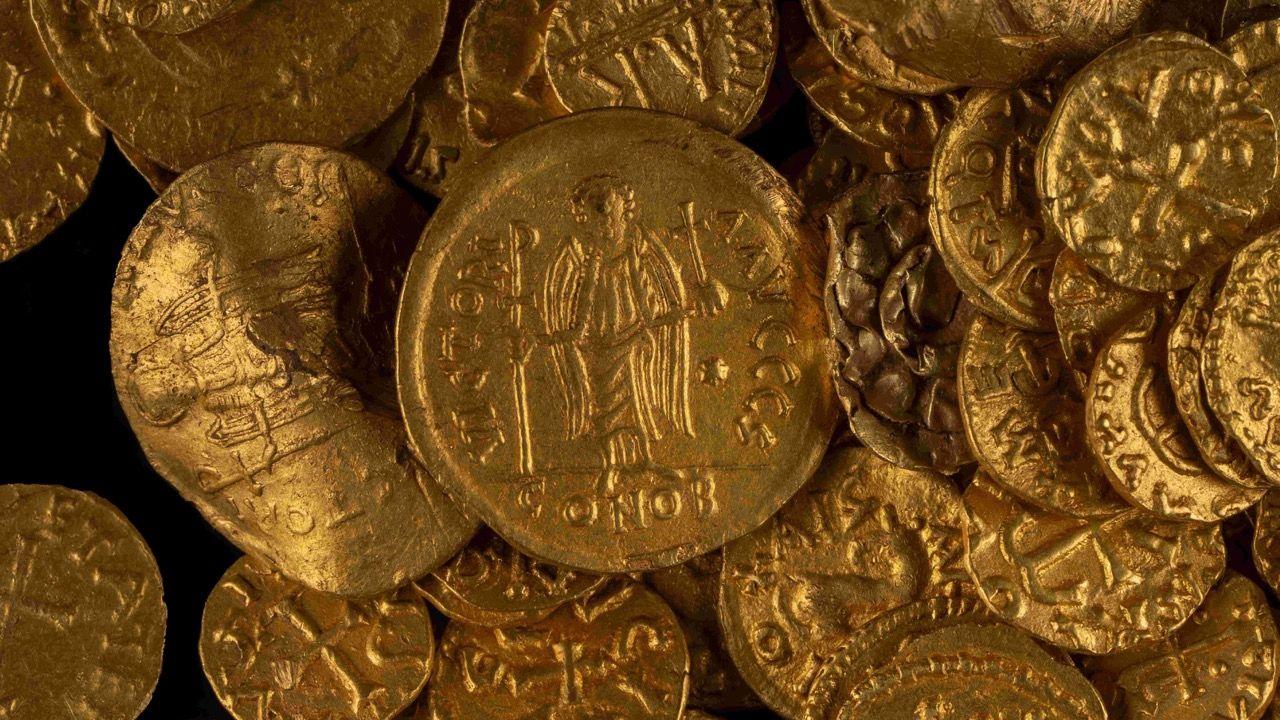
The hoard will stay in Norfolk after Norwich Castle was given funding by the National Heritage Memorial Fund, the Art Fund and The Wolfson Foundation to acquire the collection
- Published
A museum is to become the new home to what is believed to be the largest collection of 7th Century gold coins found in Britain.
Norwich Castle Museum and Art Gallery in Norfolk has acquired the hoard which is made up of 129 coins and includes 118 different coin designs and 51 different European mints.
The hoard was discovered by two metal detectorists in a west Norfolk farmer's field between 2014 and 2020.
Charles Bingham-Newland, chair of the Friends of the Norwich Museums, said: "The hoard will add immeasurably to our knowledge of the Anglo-Saxon period."
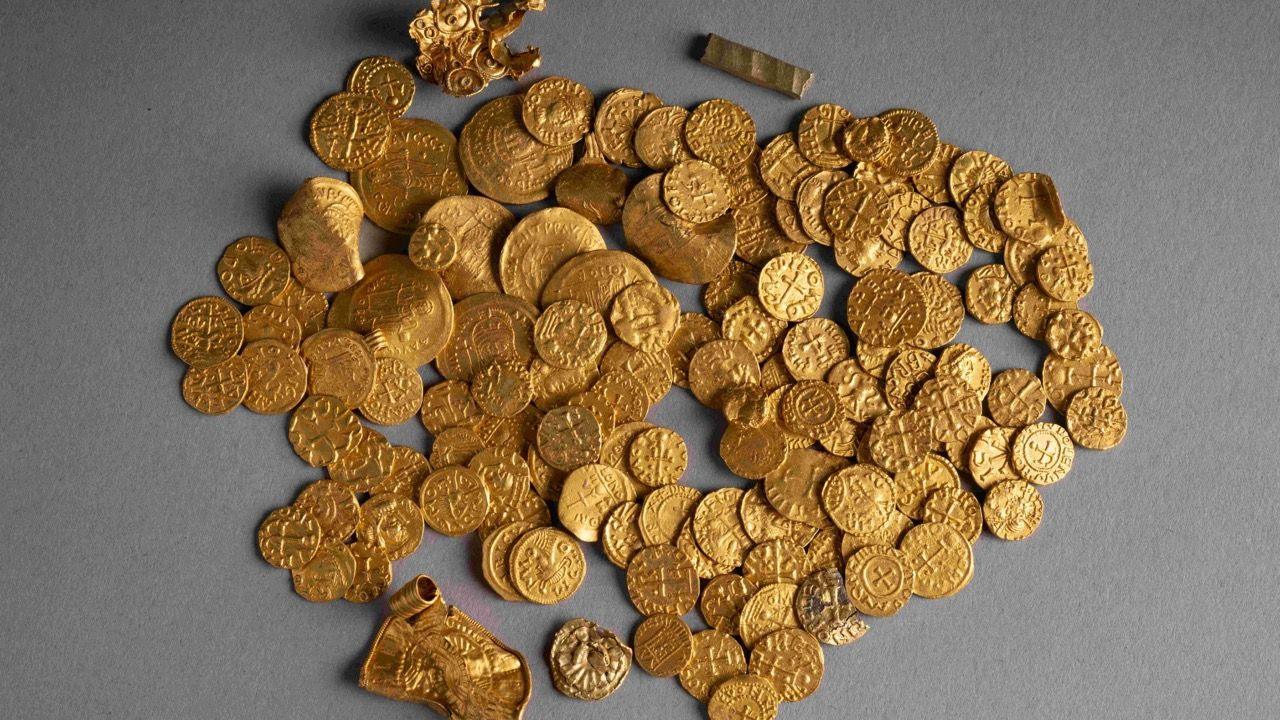
The coins were discovered between 2014 and 2020 by two metal detectorists in a field in west Norfolk
The museum has been able to acquire the hoard with funding by the National Heritage Memorial Fund, the Art Fund and The Wolfson Foundation.
The collection is believed to most contain Frankish tremisses which were minted in the Merovingian Frankish kingdoms that occupied modern-day France, Germany, Switzerland and the Low Countries.
They are said to be the first coins made and used in Europe after the fall of the Roman Empire and predate the first gold coinage made in Anglo-Saxon England.
The find is one of only eight hoards of this type of coin known from Europe and the third in the United Kingdom.
Listen: Gold hoard an ‘Incredible feet of metal detecting’
Jail for PC who kept gold coin proceeds
- Published8 March 2017
Largest hoard of gold Anglo-Saxon coins unearthed
- Published3 November 2021
Anglo-Saxon coin hoard could be worth £400,000
- Published29 November 2021
When the coins were declared as treasure by a coroner's court in November 2021, Norwich Castle said it hoped to be able to acquire the hoard.
At the time of their discovery, one finder notified the authorities whereas the other tried to sell a number of coins and was jailed for 16 months.
Prior to their discovery, the largest hoard of coins from the same period was a purse of 101 coins discovered in Crondall, Hampshire, in 1828.
Another purse found that contained 37 coins was discovered at the famous ship burial site in Sutton Hoo, Suffolk, which was excavated in 1939.
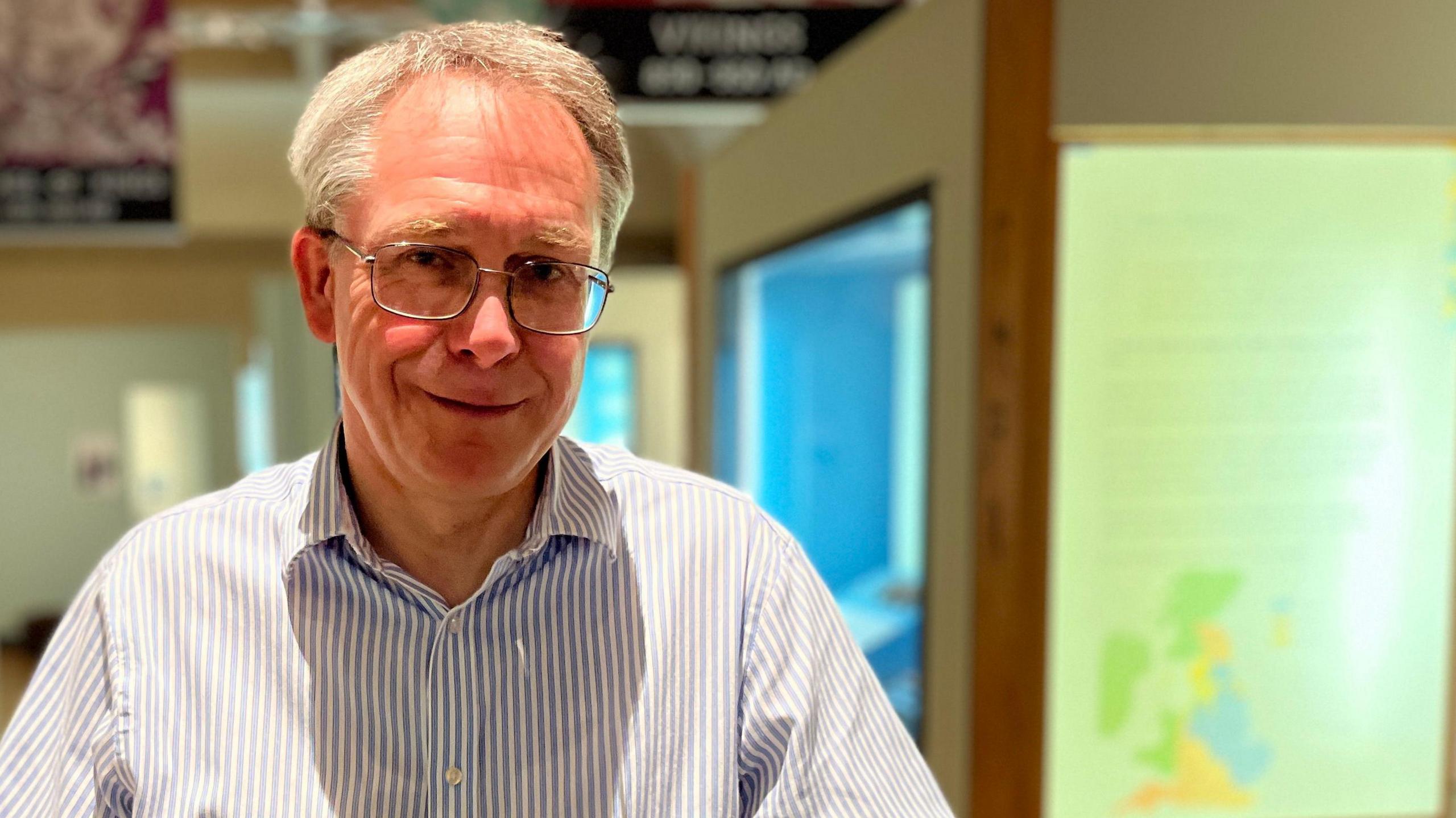
Dr Tim Pestell said studying the hoard could unlock an understanding of early trade and exchange systems
Giving the coins to the museum will make sure they remain intact and accessible to researchers and visitors.
Dr Tim Pestell, senior curator of archaeology at the castle, said: "This internationally significant find reflects the wealth and continental connections enjoyed by the early Kingdom of East Anglia.
"Study of the hoard and its find spot has the potential to unlock our understanding of early trade and exchange systems and the importance of west Norfolk to East Anglia's ruling kings in the 7th Century."
The hoard going on display marks the reopening of Norwich Castle's Anglo-Saxon and Viking Gallery which has been closed for several years while work to transform the castle's Norman Keep has been under way.
Get in touch
Do you have a story suggestion for Norfolk?
Follow Norfolk news on BBC Sounds, Facebook, external, Instagram, external and X, external.
- Published20 April
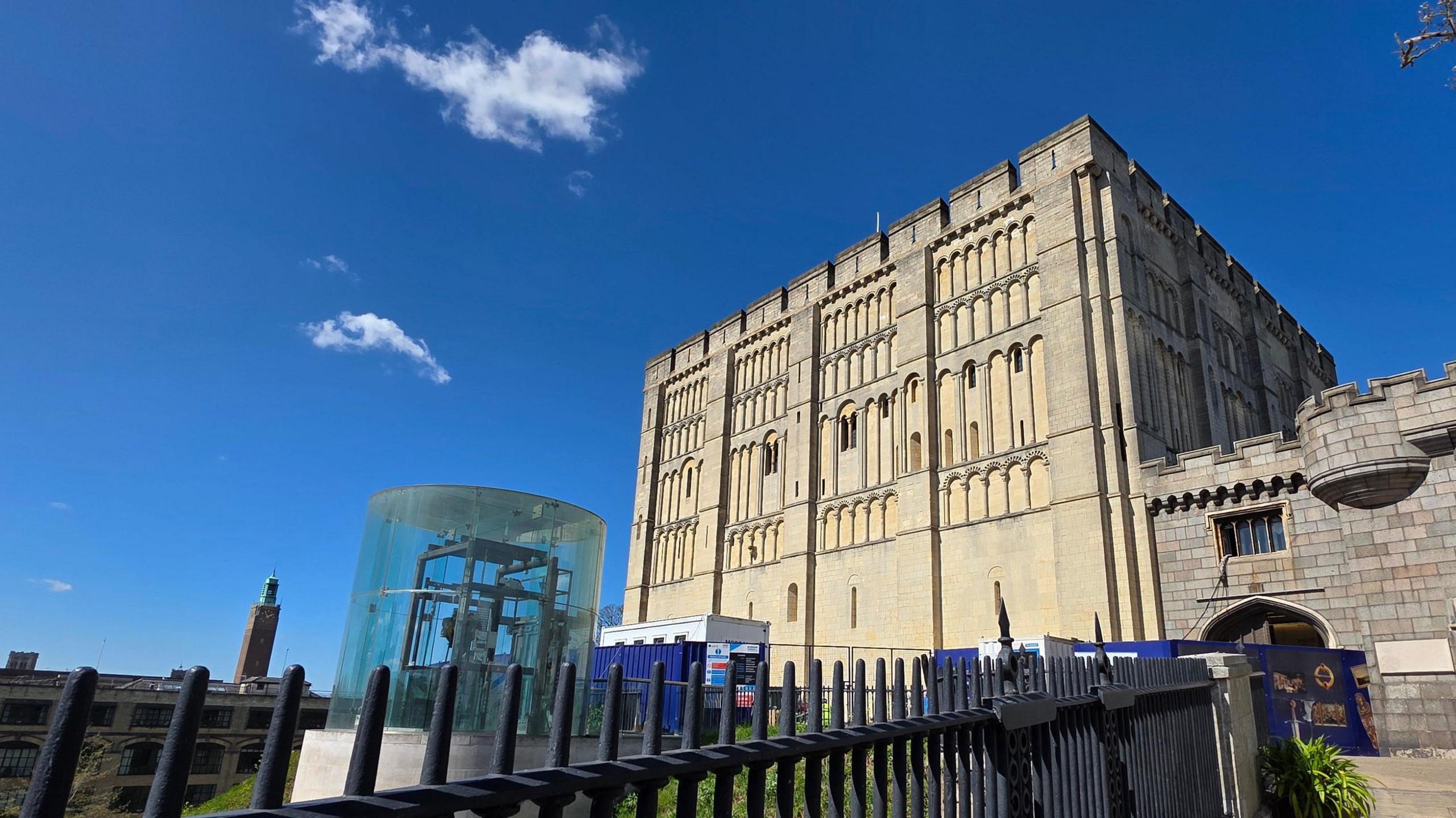
- Published1 March
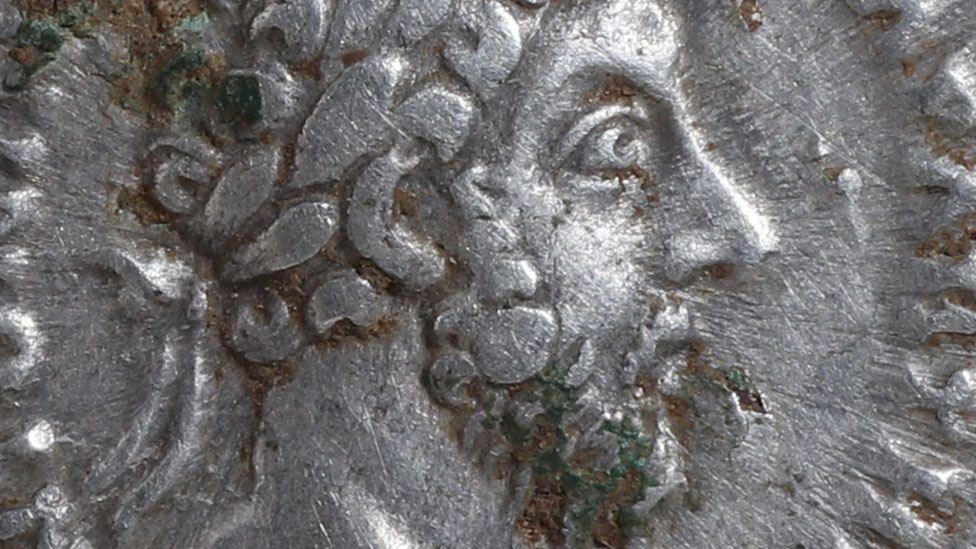
- Published24 January 2024
